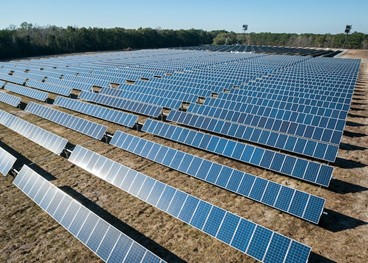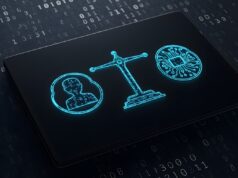Noah Crispi works in the utility solar industry, and in the following article discusses the integration of solar power to the grid.
Noah Crispi notes that only about 70% of the incoming solar radiation that the sun shines on Earth gets absorbed, but despite that, one hour’s worth of solar energy can is already enough to satisfy Earth’s energy needs for an entire year.
Harnessing that energy and integrating utility solar is done with large solar power plants and solar farms that can generate energy on a utility-scale level. To supplement utility solar, there is another source of solar energy: distributed energy resources (DER). In fact, these smaller-scale sources of solar energy (like rooftop solar panels) account for ⅓ of the all solar energy used in the United States in 2023.
So, how can integrating utility solar benefit communities?
Noah Crispi on the Bright Side of Solar Energy
Renewable Energy Source
The sun is estimated to die within 5 to 10 billion years from now, there’s no fear of it dying out any time soon–and even when it does, energy would be the least of Earth’s problems.
Lower Electricity Bills
Noah Crispi says that aside from using renewable energy when possible, if a household generates more energy than it uses, the excess can be “sold” back to the grid via “net metering.”
Back when photovoltaics were first used in 1839, it could only convert light into electricity at 2% efficiency, making it prohibitively expensive. Now, in 2020, the advances in technology allow photovoltaics to convert at 20% or higher efficiencies, making 1 watt of power cost $2 or less.
Low Maintenance Costs
Maintenance fees can run from $280 to $720 annually, so factor that in when checking the viability of a home for solar energy. Online solar calculators can make this process easier.
Integrating Solar into the Community
Over the last 10 years, the adoption of solar energy has increased tremendously, allowing communities to access the advantages of solar power.
Noah Crispi says that local governments play an integral role in increasing solar adoption rates in their community. Incorporating a focus towards renewable power in local policies can make solar more accessible and affordable for residents and businesses. As well as setting an example by installing solar on government-owned land, buildings, and public spaces can encourage solar use.
Challenges to Address During Integration
Voltage Fluctuation and Regulation
Weather and daylight conditions affect the availability of power, and the fluctuations can break appliances, or cause health concerns through flickering lights.
Short Circuit Shocks
Noah Crispi explains that introducing solar power to the grade can cause more short circuits, posing a hazard to people and equipment. This is due to the additional solar system infrastructure connected to the electrical grid, opening more avenues for fault currents to occur.
Unintentional Islanding
An “island” occurs when a portion of the electricity grid is still running while the rest have blacked out. This sounds like a benefit, but it can be dangerous for those that are tasked to address the blackout, unaware that a portion of the grid is still active.

Frequency Variation and Regulation
Electricity needs to have a stable frequency (how fast it flows), but solar power can cause this frequency to fluctuate and cause the electricity grid to shut down.
Reactive Power Requirement
Noah Crispi says that reactive power is used to keep voltage constant, so that anything using electricity gets a stable supply and doesn’t get damaged. If too much solar power is present in the grid, reactive power might not be enough to support it.
Overall, when solar power is infused into the electricity grid, there’s a chance that it would cause voltage and frequency problems, which could lead to safety and stability concerns.
However, there are ways to manage those concerns.
Possible Ways to Address Challenges
Flexible System Operation
Noah Crispi also notes that one way to manage the influx of solar energy is using technology to monitor and quickly respond to electricity supply and demand. This can make power plants vary the power generated depending on demand to keep stability within the electricity grid.
Flexible Demand
Social agreements with residents and businesses can also contribute to managing the conditions of the grid. Minimizing use during peak hours can help balance the supply and demand of power.
Interconnected Transmission Network
Through upgrading the electricity grid, solar power can be shared across longer distances more efficiently to reduce the fluctuations of supply and demand, which avoids instability within the grid.
By being smart with how solar energy is used and shared, communities can take advantage of lower utility bills and contribute to a more sustainable future.









